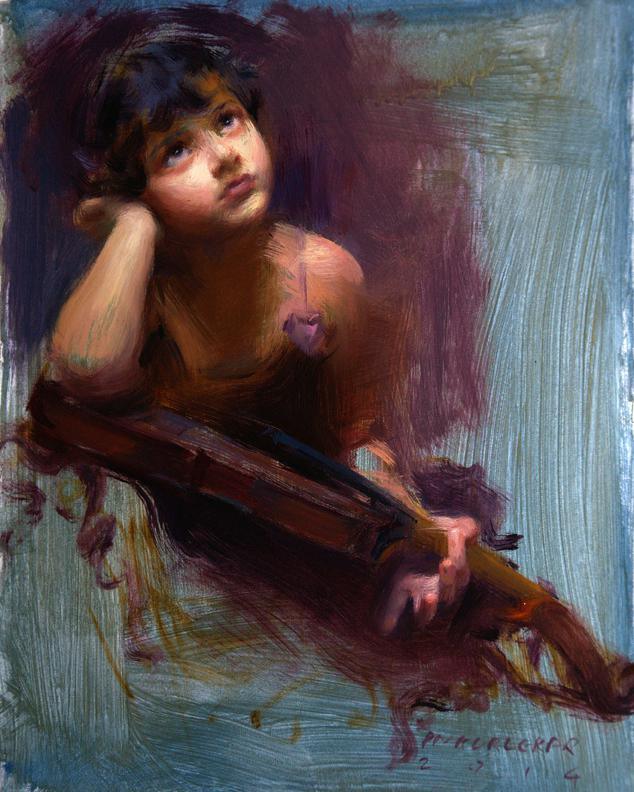The Influence of Figurative Oil Painting on Modern Art and Culture
The Influence of Figurative Oil Painting on Modern Art and Culture
Blog Article
Understanding the Art of Metaphorical Oil Painting: Important Tips and Techniques for Aspiring Artists
Figurative oil painting represents an intricate junction of technique and interpretation, requiring a comprehensive comprehension of human composition, composition, and color theory. An expedition of color consistency and texture methods can dramatically enhance the visual influence of their job.

Understanding Human Anatomy
Recognizing human composition is essential for any type of artist desiring master figurative oil painting. An extensive grasp of the human kind enables artists to develop natural depictions that reverberate with audiences. Knowledge of anatomical structures, such as joints, bones, and muscles, gives necessary insight right into just how the body actions and presents.
Artists ought to familiarize themselves with the proportions of the human number, consisting of the relationship between different body parts and exactly how these percentages differ across genders and ages. This understanding enables exact scaling and point of view in their work. Furthermore, understanding the underlying musculature improves the ability to show movement and stress in a figure, causing a much more engaging and dynamic structure.
Studying makeup additionally assists in recognizing subtle subtleties in position and expression, which are essential for sharing emotion and story within a painting. Resources such as physiological textbooks, life illustration sessions, and on-line tutorials can be invaluable tools for artists seeking to grow their anatomical knowledge. Ultimately, grasping human makeup not only improves technical skill yet likewise enhances a musician's innovative vision, allowing them to bring their figurative oil paintings to life with credibility and depth.
Significance of Structure

Trick principles of structure include equilibrium, unity, and centerpieces. Achieving balance makes sure that no solitary element bewilders the others, while unity develops a feeling of consistency throughout the piece. Focal points accentuate significant facets of the art work, enabling customers to involve with the story or theme a lot more deeply.
Furthermore, using leading lines and the rule of thirds can dramatically improve composition. Leading lines naturally assist the visitor's stare with the painting, while the regulation of thirds offers a framework for putting key aspects in a visually attractive manner. By understanding make-up, aspiring musicians can raise their metaphorical oil paintings, changing them right into engaging visual stories that reverberate with their target market.
Mastering Color Concept
Color concept functions as an essential element of figurative oil paint that complements the principles of structure. Comprehending the shade wheel, that includes primary, secondary, and tertiary shades, is important for producing harmonious combinations and efficient visual narratives.
Secret principles such as saturation, color, and worth play an important duty in establishing the mood and influence of a painting. Artists must check out cozy and great shades to evoke particular feelings; cozy shades helpful resources frequently share energy and passion, while great shades can impart calmness and harmony.
The connection in between complementary shades-- those opposite each other on the shade wheel-- can develop striking contrasts and vibrant structures. When juxtaposed, these colors improve each various other's vibrancy, attracting the customer's eye and adding deepness to the art work.
In addition, comprehending analogous shades enables artists to achieve a feeling of unity and coherence. By selecting colors that are adjacent on the wheel, one can preserve a balanced ambience throughout the piece.
Ultimately, mastering shade concept outfits aiming artists with the devices necessary to adjust color deliberately, improving their capability to share feeling and story through metaphorical oil painting. figurative oil painting.
Methods for Texture
A range of strategies can efficiently develop texture in metaphorical oil painting, including depth and dimension to the artwork. One basic technique is using impasto, where thick layers of paint are put on the canvas, permitting a three-dimensional top quality. This technique boosts light communication, producing vibrant aesthetic interest.
Another method is scumbling, which entails applying a slim layer of lighter paint over a dried out darker layer. This strategy allows the underlying color to reveal through, causing a soft, textured effect that can evoke a sense of atmosphere or age. Dry cleaning is additionally essential; using a dry brush with very little paint, musicians can produce fine lines and fragile appearances, ideal for catching the nuances of skin or material.
Furthermore, palette knives can be used to use or scratch my company paint, generating one-of-a-kind patterns and appearances. Trying out with different tools and materials, such as sponges or rags, can additionally enhance the textural quality of a painting. Inevitably, understanding these strategies calls for practice and experimentation, allowing artists to discover the varied responsive qualities that can boost their metaphorical works.
Creating Your Special Design
A musician's special style is typically the culmination of personal experiences, influences, and techniques sharpened over time. Establishing this uniqueness in figurative oil paint requires a mindful effort to check out both your psyche and the wider imaginative landscape. Begin by showing on the motifs and topics that reverberate with you mentally; your enthusiasm will certainly instill authenticity right into your job.
Research study various designs and activities, yet instead than imitating, remove components that speak with you - figurative oil painting. Experiment with different techniques, shade schemes, and compositions, allowing yourself the flexibility to play without the pressure of excellence. Keep a sketchbook or journal to document your ideas, ideas, and creative progress; this will offer as a beneficial resource for recognizing recurring themes and choices
Look for positive responses from advisors or peers, as they can give insights that light up facets of your job you might overlook. Be patient with on your own; the trip of creating a special design is recurring, advancing with every canvas and each brushstroke you experience.

Verdict
Grasping metaphorical oil paint demands a detailed understanding of human anatomy, composition, and shade theory. Embracing these fundamental principles will considerably benefit aspiring artists on their imaginative trip.
Metaphorical oil paint stands for a complicated intersection of method and interpretation, requiring a thorough comprehension of human composition, structure, and shade theory. An exploration of color harmony and appearance techniques can substantially boost the aesthetic influence of their job. By mastering structure, aiming musicians can raise their metaphorical oil paintings, changing them right into compelling visual tales that reverberate with their target market.
Experiment with various techniques, color schemes, and make-ups, allowing on your own the flexibility to play without the pressure of perfection.Mastering figurative oil painting demands an extensive visit homepage grasp of human anatomy, composition, and color concept.
Report this page